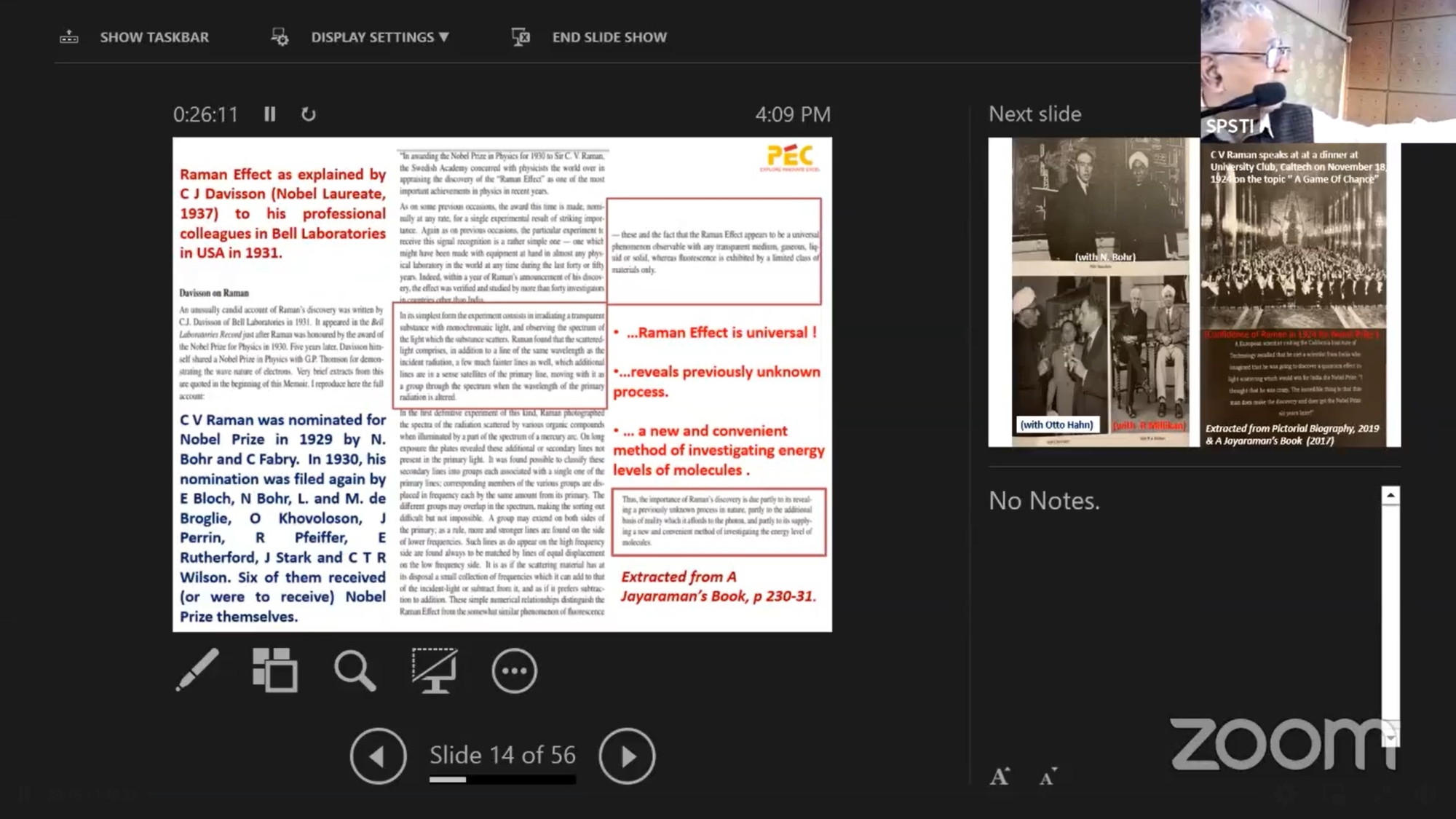National Science Day is observed on the last day of February every year to commemorate the comprehension by C V Raman of the observation of a secondary radiation emanating as a consequence of scattering of light by molecules in a liquid. Raman had intensified his studies on scattering of light and X-Rays by liquids on return from his first visit abroad in 1921. An observation relating to an unexpected secondary radiation (the so called ‘feeble’ fluorescence) from highly pure water, first noted in 1923, remained unexplained for over six years. Taking cue from another unexpected observation on scattering of light from glycerine, C V Raman asked his research student K S Krishnan to refocus on scattering of sunlight by transparent liquids in the first week of February, 1928. On Feb 16, 1928, Raman and Krishnan telegraphically submitted a Research Note to Nature (London), claiming the identification of a new type of ’Secondary Radiation’. However, from more measurements carried by Raman himself between Feb.17 and Feb. 27, Raman reckoned that the new secondary radiation had different (average) wavelength than that of the incident sunlight. On Feb. 28, 1928, he started to confirm his new effect by repeating his experiment with discrete wavelengths emerging out of a Mercury Lamp. As he became fully convinced, he announced his startling discovery to the Press in Calcutta on Feb. 28 and it appeared in the newspapers on 29 th morning. C V Raman had been confident since long that such a result would merit the Nobel Prize. However, the progress to stage of the actual award of the coveted honour to him was not a cakewalk for him, as his group was not the only one in the world studying the phenomenon of scattering of light by gases, liquids and solids. After stiff challenge(s), Raman went past his competitors. One reckons on hindsight that it was CV Raman’s good luck that he received his well deserved Nobel Prize soon after his discovery. I shall share my comprehension of this instructive saga.

